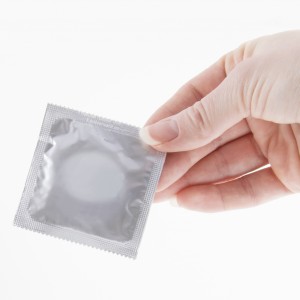 Sexually Transmitted Diseases, or STDs, are usually spread from one person to another through sexual intercourse. STDs may be asymptomatic (not show any symptoms) in many individuals. In fact, many of the people who have a STD are unaware of it and therefore do not seek treatment, increasing the risk of infecting their partners. For this particular reason, the term STIs, or sexually transmitted infections, is commonly used today. It is extremely important for individuals who are sexually active to be regularly screened for STDs, because an infected person may pass on the infection to another before showing symptoms of a disease.
Sexually Transmitted Diseases, or STDs, are usually spread from one person to another through sexual intercourse. STDs may be asymptomatic (not show any symptoms) in many individuals. In fact, many of the people who have a STD are unaware of it and therefore do not seek treatment, increasing the risk of infecting their partners. For this particular reason, the term STIs, or sexually transmitted infections, is commonly used today. It is extremely important for individuals who are sexually active to be regularly screened for STDs, because an infected person may pass on the infection to another before showing symptoms of a disease.
Who is at risk for STDs?
Anybody can contract a STD. The most at risk group are young teens and adolescents ages 15-24. Factors that increase the risk for getting STDs include:
- Unprotected sex
- Multiple sexual partners
- Having sex with a partner whose sexual history you do not know
- Becoming sexually active at a young age
- Tobacco and alcohol use
- Stress and other viral or bact
Why is it important to know?
Sexual activities can lead to not only unwanted pregnancy but also a list of STDs (Sexually Transmitted Diseases)—some of which can be fatal. Today STDs are at epidemic proportions, and young people are the ones at the highest risk. Unfortunately, many teenagers are unaware of the dangers they face and do not take the initiative to learn about sexual safety until it is too late. To reduce your own risk of getting STDs and pregnancy, it is extremely important for you to learn to protect yourself!
Principles of Safer Sex:
- Seriously consider whether you want to have sex
- Prevent exposure to blood, semen, vaginal and other bodily fluids
- Cover up body parts that could be infectious
- Always use a condom, and use a new one every time
- Be in a monogamous relationship
- Make sure both you and your partner get tested for STDs
- If you or your partner have/has contracted a STD, receive treatment immediately and do not have sex until your doctor says it’s okay
We use the term safer instead of safe because sexual activities can never be completely free of risk. The only way to entirely avoid STDs and unwanted pregnancy is abstinence (not having
Menstruation, or period, is the shedding of a woman’s uterus lining. Each month, one of the ovaries releases an egg. This is called ovulation. At the same time, hormonal changes prepare the uterus for pregnancy. If ovulation takes place and the egg is not fertilized, the lining of the uterus sheds through the vagina and passes out the body (this is the blood that you see). Menstruation is part of the menstrual cycle. A cycle is counted from the first day of one period to the first day of the next period. The average menstrual cycle is 28 days long. If a woman does not have a period for 90 days, she should see the doctor to check for pregnancy, early menopause, or other medical problems. On an average, girls get their first menstrual period between 8-13 years old. The first menstrual period typically starts two to two-and-a-half years after breast development begins. Periods can be light, moderate, or heavy, and the length of the period also varies from woman to woman. Most periods last from 3 to 5 days. During the early years of menstruation, girls usually have “medium” menstrual flow; most report changing a pad approximately 3 to 6 times a day. During menstruation, the uterus, which is a muscle, contracts and relaxes more than it does at other times in the month. This can produce the uncomfortable feeling of cramps. Using a heating pad or hot water bottle may help ease s
What is Cervical Cancer?
The cervix is the lower part of the uterus, and cervical cancer is one of the most common cancers that affect a woman’s reproductive organs. Cervical cancer is caused by various strains of a virus called human papilloma virus (HPV), some of which are also responsible for causing genital warts in both men and women. HPV is transmitted through skin-to-skin contact, especially during sexual intercourse. Most women’s immune systems are able to fight the infection, but in a small group of women, the virus survives for years in the body and eventually changes some of the cervical cells into cancer cells.
Routine Screenings and Early Detection of Cervical Cancer:
Cervical cancer can usually be found early by routine Pap smears (or Pap tests). During a Pap smear, a small cell sample is collected through a quick swabbing or brushing on part of the cervix, and the sample is examined in a laboratory to look for abnormalities. In the precancerous stage, abnormal cells are found only in the outer layer of the cervix and have not invaded deeper tissues. If untreated, the abnormal cells may change into cancer cells, which may spread into the cervix and surrounding organs. Conditions caught early at the pre-invasive stage are rarely life threatening and typically require only treatment at the doctor’s office.
The inside of the breast is made up of fatty tissue and milk-producing glands called mammary glands. Breast development begins with puberty and is caused by the changes in hormone levels in your body. The timing of breast growth is determined by heredity and nutrition. On the average, breasts begin to grow when girls are around 10 years old, although some girls start earlier and others later. The age at which breast development begins does not affect the final size of the breast. Breast shape and size are determined mostly by heredity and usually stay the same once development is complete (which takes 3-5 years). However, excessive weight loss or gain, and pregnancy, may cause changes to the breasts. A girl may find her breasts to be uneven in size during development. This is normal. The breasts will be about the same size as the girl gets older, usually by age 20. You can check with your health care providers for further information.
A Word of Advice:
- No birth control method is guaranteed to work 100% of the time, except for abstinence (not having sex).
- Most types of contraceptives do not offer protection against STDs. Using a condom every time is an effective way to reduce your risk.
- No matter which method you choose, make sure you follow the instructions carefully to maximize its effectiveness
Below are some common methods for birth control. Discuss with your health care provider about other options and find out which method is the best for you.
Oral Contraceptives (Birth Control Pills)
Birth control pills are small tablets that women take once daily to prevent pregnancy. They are considered a very effective and convenient means of contraception. There are many different types of birth control pills, but they all work in a similar way: they contain one or more female hormones that stop ovulation (the process through which the ovary releases an egg) and prevent s




